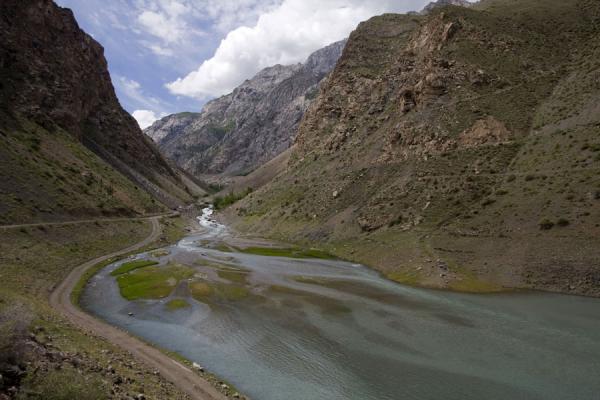

To visit: Sacred Art Museum, Nossa Senhora das Angústias Church, Nossa Senhora do Pilar Chapel, Imperio dos Nobres and Porto Pim fortifications, Caldeira Natural Reserve, Capelinhos, grottoes and caves in Costa da Feteira and Monte da Guia belvedere. In Horta, a famous yacht harbor, look at the beautiful tiles and gilded carvings in the 17th and 18th century churches of Sao Salvador, Nossa Senhora do Carmo and Sao Francisco. You must also visit Guadalupe and its Baroque church, Luz and Praia (typical windmills). In the Furna do Enxofre, dazzling sights and a vaulted cave over an underground lake (between 11am and 2pm the sunlight filters in). In Santa Cruz da Graciosa you will find ancient streets and manor-houses, a beautiful mother-church (16th-18th centuries), Santo Cristo Church (16th century), Cruz da Barra (Manueline), and Ethnographic House. Other points of interest: Praia da Vitoria, Santa Barbara, Sao Sebastiao, and Vila Nova. Special reference to the forts of Sao Sebastiao and Sao Joao Baptista (16th-17th-centuries) the palaces of the Bettencourts (Baroque) and of the Capitaes-Generais the Cathedral, with its silver altar front and treasure the churches of Colegio dos Jesuitas, Sao Goncalo and Nossa Senhora da Conceicao (17th-century) and the churches of Misericordia and Nossa Senhora da Guia (18th-century, the latter encloses the Angra Museum). The historic center of its capital, Angra do Heroismo, has been classified in UNESCO’s International Heritage list. Other places to visit: Caldeira das Sete Cidades (green and blue lakes), Lagoa do Fogo, Ribeira Grande, Vale das Furnas (spas and hot mineral pools), and Vila Franca do Campo. Palaces: Fonte Bela and Santa Ana Conceicao and Santa Catarina Casa de Carlos Bicudo and the Pacos do Concelho. In the capital, Ponta Delgada, the famous 18th century portals open up to a number of monuments that are worth visiting, most of them built between the 16th and the 18th century: Carlos Machado Museum and churches of Sao Sebastiao, Sao Pedro, Sao Jose, Colegio and Nossa Senhora da Conceicao, convent and chapel of Nossa Senhora da Esperanca and Santa Ana Chapel.
:max_bytes(150000):strip_icc()/GettyImages-726783633-5b800de846e0fb0082ad02f8.jpg)

Special mention to: Praia, Santo Espirito, Sao Lourenco, Sao Pedro and Vila do Porto, a village with superb manor houses, mother-church and Nossa Senhora dos Anjos Chapel (where Columbus’ crew prayed). Offers excellent water sports facilities. As a foreign couple was silently looking at the Caldeira das Sete Cidades when they were interrupted by their six-year-old son, who asked them: “Is this God’s home?” Santa Maria Island There are many stories to tell of the archipelago’s beauty, of fishermen or shepherds, but among them there is one which was told by a holidaymaker. This legendary archipelago, consisting of nine poetically-named islands, enjoys year-round mild temperatures (between 14☌ and 22☌–57☏ and 71☏) and is a peaceful shelter with a population of 250,000 inhabitants, for whom the words “stress” and “pollution” are unknown. Apart from international airports of Santa Maria, Ponta Delgada and Angra do Heroismo, there are flights to the islands (operated by the regional airline TAP Air Portugal) and ferry boats between the islands.Įven the blase visitor will be touched by the sapphire blue and emerald green lakes, fertile prairies, volcanic cones and craters, colorful hydrangeas and azaleas, 15th century churches, and majestic manor houses. Consisting of nine islands, the Azores are divided into three groups: the eastern ( Sao Miguel and Santa Maria islands), the central ( Terceira, Graciosa, Sao Jorge, Pico and Faial islands), and the western ( Flores and Corvo islands).


 0 kommentar(er)
0 kommentar(er)
